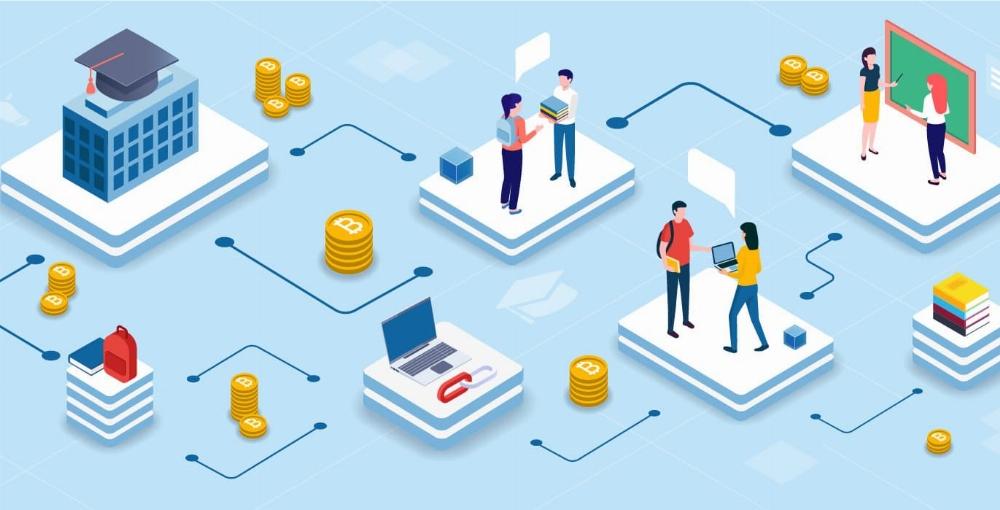How Blockchain Technology is Securing Academic Records: A New Era of Educational Trust
Introduction
In todayS digital age, the management and security of academic records are more crucial than ever. Diplomas, transcripts, and certificates form the backbone of educational verification and career advancement. Yet, conventional methods of storing and validating these records have been plagued by inefficiencies, risks of forgery, and bureaucratic hurdles. Enter blockchain technology — a groundbreaking innovation that is reshaping the future of education with its unrivaled security, transparency, and trustworthiness. This article explores how blockchain is transforming the way academic records are stored, accessed, and verified, paving the way for a new era of educational trust.
Understanding Blockchain Technology in Education
Blockchain technology is a decentralized digital ledger that securely records transactions across a network of computers. Each block contains a timestamp and a link to the previous block, ensuring a chronological, tamper-resistant record.Applied to academia,blockchain addresses longstanding issues associated with data integrity,verification delays,and credential fraud.
- Decentralization: Eliminates centralized points of failure and reduces the risk of data manipulation.
- Immutability: Once recorded, academic credentials cannot be altered or deleted, guaranteeing authenticity.
- Transparency: Stakeholders can easily verify the legitimacy of educational achievements without intermediaries.
- Security: blockchain’s cryptographic algorithms safeguard sensitive student data.
The Need for Secure Academic Records
Educational institutions, employers, and students alike depend on trust and transparency in academic credentials. Though, institutions commonly face challenges such as:
- time-consuming manual verification processes
- Susceptibility to credential fraud and forged transcripts
- Loss or damage to physical certificates
- Privacy concerns over personal data leaks
Blockchain solutions in education are addressing these challenges head-on, ensuring academic records are immutable, easily accessible, and secure from unauthorized changes.
How Blockchain Secures Academic Records
Let’s break down the specific ways blockchain is transforming the security of academic records:
1. Decentralized Verification
With blockchain, academic records are no longer stored in a single institution’s proprietary system. Rather, credentials are distributed across a network, making it nearly impossible for any single entity to alter or erase data retrospectively.
2. Smart Contracts for Automation
Blockchain uses smart contracts to automate the process of issuing and validating certificates.When a student completes a program, the institution’s blockchain ledger automatically issues a digital credential, greatly reducing administrative overhead while improving accuracy.
3. Tamper-Proof Credentials
Each record is cryptographically signed and linked to previous blocks; this chain ensures that any unauthorized changes to the data are promptly detectable and rejected by the network.
4.Instant, global Access
Blockchain-driven platforms allow graduates and employers to instantly access and verify academic credentials, no matter where they are in the world, without needing to contact the issuing school directly.
Benefits of Blockchain Academic Records
- Enhanced Security: Advanced encryption protects student data from hackers and unauthorized access.
- Faster Verification: Employers and academic institutions can instantly confirm the authenticity of records, accelerating admissions and recruitment.
- Reduced Fraud: Immutable blockchain records eradicate opportunities for forged degrees or altered transcripts.
- Cost Savings: Automating verification reduces administrative costs and paperwork.
- Greater Student Control: Students own their digital credentials, empowering them to share and manage their academic records as they see fit.
- Interoperability: Standardized blockchain protocols enable seamless cross-institutional and international recognition of educational credentials.
Real World Applications: Case Studies
MIT’s Digital Diplomas
in 2017, the Massachusetts Institute of Technology (MIT) pioneered the digital diploma initiative using blockchain technology.Graduates received both a traditional diploma and a blockchain-backed digital credential, which they could share securely with employers and institutions. This eliminated the need for third-party verifications and ensured immediate authenticity.
The University of Nicosia, Cyprus
The University of Nicosia became the first university to issue academic certificates on the blockchain, supporting transparent, tamper-resistant records and opening its doors to global verification.
Blockcerts
Blockcerts is an open standard for creating, issuing, viewing, and verifying blockchain-based certificates. Many institutions worldwide utilize Blockcerts to enhance the integrity and accessibility of their credentials.
expert Insights & First-Hand Experiences
“Blockchain has enabled us to empower our graduates with ownership of their credentials, while drastically reducing verification time for employers worldwide.”
– Digital Credentials Lead,Leading European University
students who have used blockchain-powered credentials report increased confidence in storing and sharing their achievements.for educators, the administrative relief and the positive impact on institutional reputation underscore the value of blockchain integration.
Tips for Implementing blockchain in Academic Institutions
- Start Small: Pilot blockchain projects with digital diplomas or certificates before expanding institution-wide.
- Select the Right Platform: Evaluate blockchain solutions such as Blockcerts or Learning Machine for compatibility and scalability.
- Educate Stakeholders: Offer training and resources to staff and students to foster trust and understanding in blockchain technology.
- Ensure Legal Compliance: Align blockchain implementations with data protection regulations (e.g., GDPR, FERPA).
- Collaborate Globally: Partner with other institutions and industry leaders to standardize blockchain-based credentialing.
Future Outlook: Blockchain and the Evolution of Educational Trust
As digital learning platforms, cross-border education, and online certifications become the new norm, blockchain in education is set to play an even bigger role. Industry analysts predict that by 2030, blockchain-powered credentialing will be standard practice across top universities and corporate training programs. With interoperability hubs and global standards on the rise, accessing, sharing, and verifying academic records will become seamless, secure, and universally trusted.
Conclusion
Blockchain technology is revolutionizing the way academic records are managed and secured. By providing tamper-proof, easily verifiable, and decentralized records, it restores trust to educational credentials and empowers students while simplifying processes for institutions and employers. As blockchain adoption in education continues to grow worldwide, academic achievements will become more portable, transparent, and trustworthy than ever before. The new era of educational trust is here — and it’s powered by blockchain.

